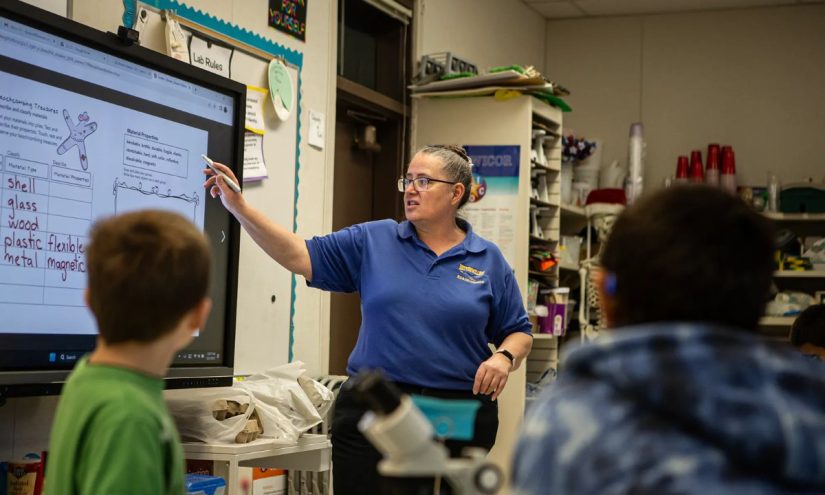Key points:
In recent years, the teaching profession has faced unprecedented challenges, with inflation emerging as a significant factor affecting educators’ professional lives and career choices. This in-depth examination delves into the complex interplay between escalating inflation rates and the self-efficacy of educators–their conviction in their capacity to proficiently execute their pedagogical responsibilities and attain the desired instructional outcomes within the classroom environment.
The impact of inflation on teachers’ financial stability has become increasingly evident, with many educators experiencing a substantial decline in their “real wages.” While nominal salaries remain relatively stagnant, the purchasing power of teachers’ incomes continues to erode as the cost of living rises. This economic pressure has created a concerning dynamic where educators, despite their professional dedication, find themselves struggling to maintain their standard of living and meet basic financial obligations.
A particularly troubling trend has emerged in which teachers are increasingly forced to seek secondary employment to supplement their primary income. Recent surveys indicate that approximately 20 percent of teachers now hold second jobs during the academic year, with this percentage rising to nearly 30 percent during summer months. This necessity to work multiple jobs can lead to physical and mental exhaustion, potentially compromising teachers’ ability to maintain the high levels of energy and engagement required for effective classroom instruction.
The phenomenon of “moonlighting” among educators has far-reaching implications for teacher self-efficacy. When teachers must divide their attention and energy between multiple jobs, their capacity to prepare engaging lessons, grade assignments thoroughly, and provide individualized student support may be diminished. This situation often creates a cycle where reduced performance leads to decreased self-confidence, potentially affecting both teaching quality and student outcomes.
Financial stress has also been linked to increased levels of anxiety and burnout among teachers, directly impacting their perceived self-efficacy. Studies have shown that educators experiencing financial strain are more likely to report lower levels of job satisfaction and decreased confidence in their ability to meet professional expectations. This psychological burden can manifest in reduced classroom effectiveness and diminished student engagement.
Perhaps most concerning is the growing trend of highly qualified educators leaving the profession entirely for better-paying opportunities in other sectors. This “brain drain” from education represents a significant loss of experienced professionals who have developed valuable teaching expertise. The exodus of talented educators not only affects current students but also reduces the pool of mentor teachers available to guide and support newer colleagues, potentially impacting the professional development of future educators.
The correlation between inflation and teacher attrition rates has become increasingly apparent, with economic factors cited as a primary reason for leaving the profession. Research indicates that districts in areas with higher costs of living and significant inflation rates experience greater difficulty in both recruiting and retaining qualified teachers. This challenge is particularly acute in urban areas where housing costs and other living expenses have outpaced teacher salary increases.
Corporate sectors, technology companies, and consulting firms have become attractive alternatives for educators seeking better compensation and work-life balance. These career transitions often offer significantly higher salaries, better benefits packages, and more sustainable working hours. The skills that make effective teachers, such as communication, organization, and problem-solving, are highly valued in these alternative career paths, making the transition both feasible and increasingly common.
The cumulative effect of these factors presents a serious challenge to the education system’s sustainability. As experienced teachers leave the profession and prospective educators choose alternative career paths, schools face increasing difficulty in maintaining educational quality and consistency. This situation calls for systematic changes in how we value and compensate educators, recognizing that teacher self-efficacy is intrinsically linked to their financial security and professional well-being.




















